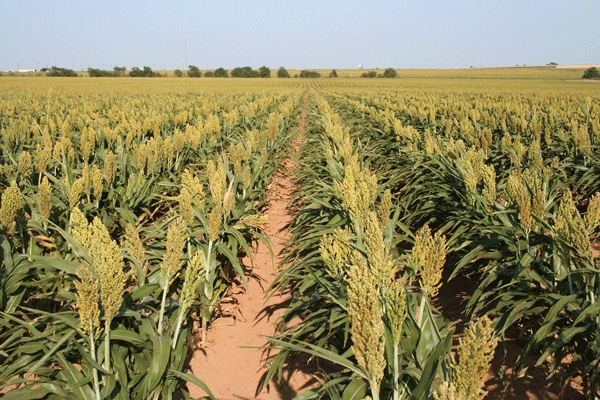
Anyone who tried to grow any crop just about anywhere in the Southwest last year can testify to the unprecedented hardship of a historical drought that limited production even in irrigated fields.
But high temperatures, says an Oklahoma State University agronomist, may have been as much a problem, possibly more troublesome in some cases, than the prolonged drought.
“Was it drought or high temperatures (that hurt yields) in 2011?” asked Rick Kochenower during the recent No-Till Oklahoma Conference in Norman.
He said the combination of soil moisture, plus the minimal amount of rainfall some areas of Oklahoma received last year should have been adequate to produce 50 bushels of grain sorghum per acre.
“Some fields had 13 inches to 15 inches of moisture for the plants to grow, including soil moisture and rainfall,” Kochenower said. “Moisture availability was not bad” even though the rainfall was below average for all areas.High temperatures proved the crop’s undoing.
Kochenower said grain sorghum planted around April 15 reached flowering stage around July 1. Daytime temperatures were ranging from 100 to 110 degrees. “Flowering was not happening,” he said. Nighttime temperatures also remained high and had “as much effect on crop production as daytime temperatures. With nighttime lows above 80 degrees, crop production doesn’t work,” he said.
Planting date may provide some benefit. The last two weeks of April and June are the best options. “May is the worst time of year to plant,” Kochenower said. “Sorghum will flower at generally the hottest and driest period in Oklahoma. The heads will have nothing in them.”
He said early planting, up to May 1, may be a key. “With the insurance planting date moved to April 20 for 2012 the crop is insurable even for replanting. That date is good for the all of Oklahoma, except for the Panhandle.”
He also recommends grain sorghum producers use a seed treatment. “It improves yield,” he said. “In North Central Oklahoma, we always get a 10- to 12-bushel yield increase with seed treatments.” Chinch bug control is a factor, he said.
Kochenower has also looked at limited irrigation on sorghum for two years, planted around June 1 and harvesting at the end of October. He applied two inches of irrigation to pre-water then irrigated three times in June, twice in July, three times in August and once in September, adding one inch each application. Irrigation total was 10 inches.
“Both years the soil profile was in great shape due to being fallow since the previous wheat harvest,” he said. “The irrigated wheat stubble caught snow during the winter and no-till reduced the amount of evaporation of rainfall received after harvest.”
His two-year average is 160 bushels per acre with 10 inches of water.
Kochenower has been tracking the value of water on grain sorghum for five years and says his best results show grain sorghum can earn $110.63 per inch of water applied. Corn, by comparison, averages just $48.76 per inch of water.
“The average of all our grain sorghum hybrids was $97.19 per inch of water,” he said. “For corn to (get close) to grain sorghum’s water use advantage, we would have to make 275 bushels per acre, and that’s still less than we make with sorghum per inch of water applied.”
Kochenower praised the United Sorghum Checkoff Program for help with research, which included funding for a combine with computer technology.
About the Author(s)
You May Also Like






